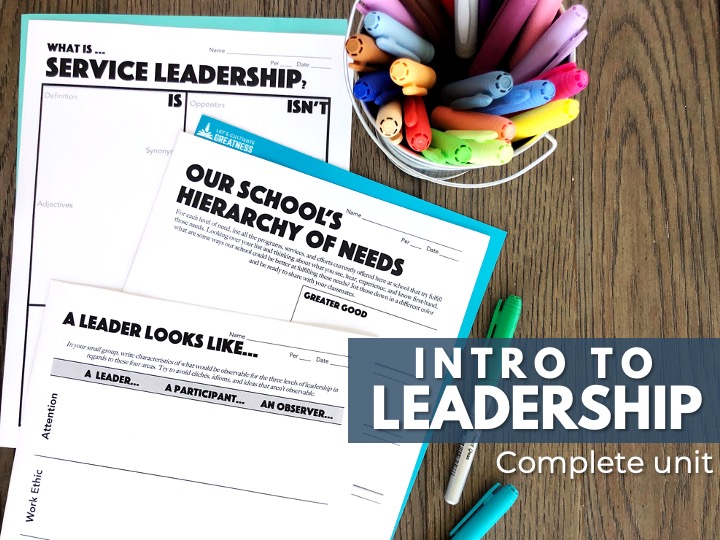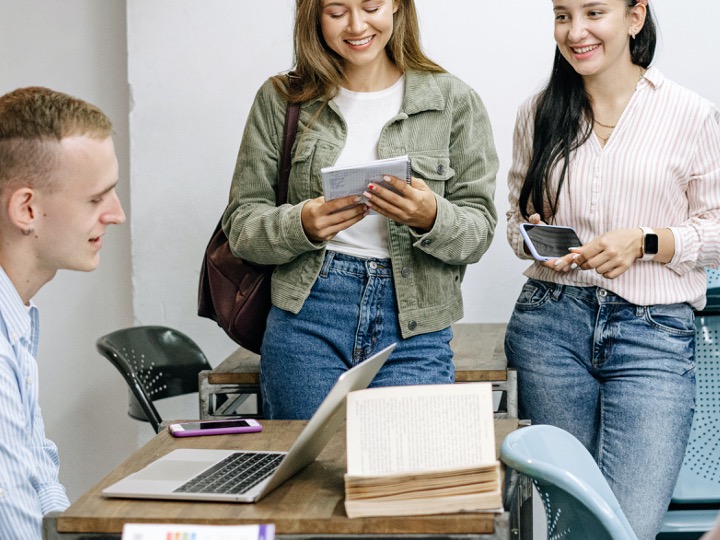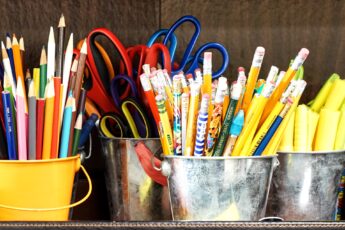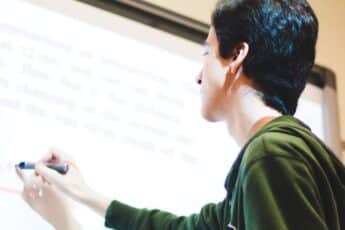Every teacher knows how important setting the right tone in the first week of class is. Likewise, those first interactions with your student council need to be intentional towards building a solid foundation for the year. Whether you are brand new to the role of student council advisor or looking to change things up this year, you can really impact the direction of your student council program and leadership class with some intentional planning.
Here are five must-do activities to kick off the year with your student leaders so they can create an energized welcome for the whole school—one that has purpose, is organized, and filled with positive energy.
Meet with Your Executive Officers
Bring your executive officers together before the school year starts to meet as a small group and help them brainstorm their goals and ideas for the year. Some open-ended questions you may want to pose:
- If at the end of this year you look back and felt it was a complete success, what happened to make you feel that way?
- What do you feel is the biggest strength our school has? Biggest obstacle?
- What word, short saying, quote, or message would you like to be the theme for this year?
- How can we best serve our school this year thinking of what has been or is happening right now in our community?
- What do you most want to build off of from last year? What do you most want to change?
These are also great questions to ask again to the larger group that includes class officers and your Leadership class once the school year has started.
If you have the chance to host a few more before-school-starts meetings with your officers, use them to:
- Put up welcome back bulletin boards and signage
- Create cheerful door signs for teachers and staff
- Color locker signs with every student’s names
- Plan a welcome-back assembly or video for the first day of school
You may want to partner with your school’s cheer team or a service club to help with these additional projects.
Welcome Students the First Day of School
One of main lessons I impress on my student council officers and leadership students are that they are the hosts—the hosts of the assemblies, of the dances, of the events they plan and put on. Their task is to make everyone feel welcomed and have fun. This is a core tenet of our program built on the idea of service leadership, and one which has been a game-changer in how we approach the meaning and purpose of our entire program.
With our mission of serving in mind, our officers and leadership students act as hosts on the first day of school to new and returning students alike. This means they are:
- Arriving early to hold doors open and greet students as they enter school
- Connecting with freshmen and new students, giving tours and helping them find their classes
- Wearing bright clothes or costumes related to the theme of the year to be easily spotted
- Hosting a welcome back assembly
- Helping serve lunch or greet students at the cafeteria doors
- Sitting at different tables at lunch acting as conversation starters
- Giving a positive send-off over the intercom at the end of the day
Build a Master Student Council Calendar
Create one central calendar with all school, extracurricular, and student council events for the year. This prevents so much headache of doubling-booked oopsies and last-minute panic of forgotten events. In another blog post, I go over all the meetings, events, assemblies, and seasonal traditions we layer onto our calendar, so head there to learn more.
In short, you’ll want to start with a calendar that includes:
- School holidays, half days, late starts, and early arrivals
- Cultural holidays (like Halloween and Valentine’s Day), appreciation days (like Teacher Appreciation Week), and community events
- Sport seasons start and end dates and individual games as soon as they are known
- School board or building leadership meetings (if monthly reports need to be submitted)
Then, once the year has started, as you meet with your full student council group or leadership class, decide and pencil in all events the group is in charge of hosting, like:
- Assemblies
- Dances and after school events
- Homecoming and spirit week events
- Student council meetings and class meetings
- Fundraiser drives
- Seasonal bulletin boards
I prefer a big paper desk calendar that I post on my wall and I task a student to update a Google Calendar to mirror it. After we have all our dates penciled in, we email them to staff, which is one of the easiest ways to respect teachers as they plan their own class calendars.
Create a Central Hub
Depending on how new you are in your student council advisor role, you may not have a lot ready to go in your organizational system. That’s okay. Even having a few files centrally located and ready to hand out will do wonders for creating a strong program. And, over time, you can be thinking of what sort of things would be greatly beneficial to have written down, recorded, or stored in a central location. This may look like a class binder, individual officer binders, and/or a Canvas class or shared Google Drive folder.
What your system becomes will be unique to your program and evolve over time, but start gathering all the forms, handouts, and even video tutorials that your students will need access to, including:
- Student body constitution
- Master calendar for the year
- Officer job duties and code of conduct
- Meeting agendas, minutes, purchase order requests, forms, and records
- How-to guides for completing tasks (like setting up AV equipment for assemblies)
The whole idea for this student council hub, besides the obvious of having a single spot for resources that’s accessible to everyone, is that institutional knowledge isn’t stored only in your brain. With a robust hub, your students will be able to be self-sufficient leaders not having to come to you for everything. Talk about a total win-win.
If you are starting from scratch or your previous system needs a complete redo, you’ll love my Student Council Starter Kit, which is a collection of every form and template you could want—from elections and constitution to meetings and brainstorming ideas.
Conduct a Kindness Project
Plan to complete a Kindness Project early in the year and begin sharing this upcoming challenge on the first day. This project can be anything from writing friendly notes to all new students and staff to a hot cocoa bar before school; it’s whatever the students choose to do! The main goal is for your student leaders to practice all the steps of conducting a small project, from brainstorming to debriefing, once through as a team before tackling their first spirit assembly or the Homecoming dance.
Spend the first couple of weeks completing the important tasks of building your calendar and playing a few team building games, but also begin planting the seed from the first day for students to brainstorm how they want to spread kindness to start off the school year. This helps your students see their central purpose of serving others from day one. Then, let your student leaders loose to work their way as a team through their first project.
My FREE Service Leadership Starter Kit has everything you need to help students conduct a Kindness Project of their own, plus some great activities on the meaning of service leadership.
If you want more great ideas and resources to have those first few weeks create a strong foundation for the year, then you will love my Intro to Leadership unit. It contains dozens of lessons, everything from creating a mission statement and goal setting to taking group dynamic personality quizzes and completing team building exercises. It’s everything you need to create a fun, positive, and inclusive year with your student council program or leadership class.

Feature image credit: Ivan Samkov









